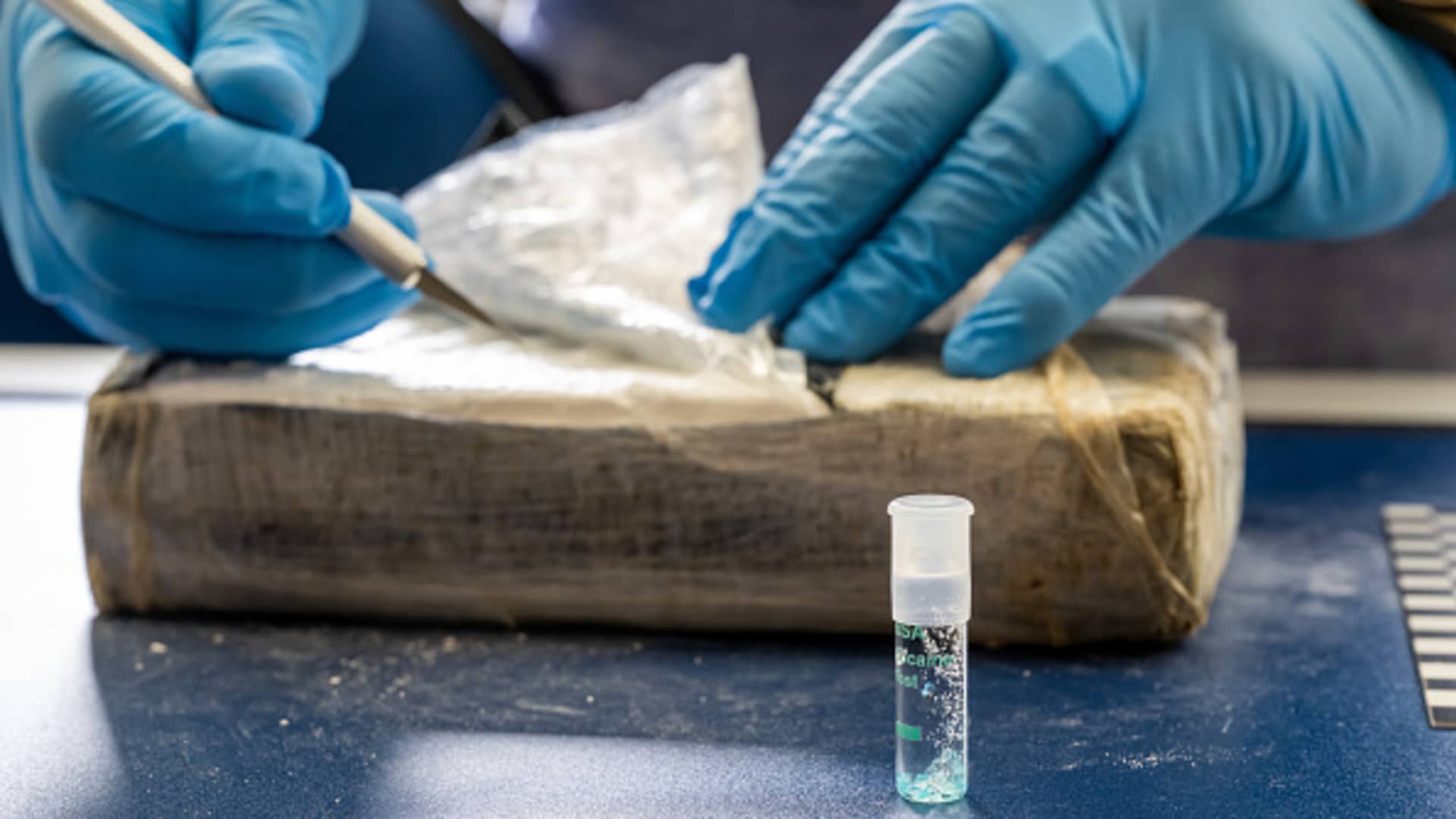Cocaine production has reached record levels, driven by post-pandemic demand and the emergence of new trafficking hubs, according to a report from the United Nations Office on Drugs and Crime.
The U.N.’s Global Report on Cocaine 2023 reveals that new trafficking hubs have appeared in West and Central Africa over the past two years.
Enhanced cultivation techniques for the coca bush and advancements in converting coca plants to cocaine have contributed to a 35% increase in production between 2021 and 2022, setting new records.
“The Covid-19 pandemic had a disruptive effect on drug markets. With international travel severely curtailed, producers struggled to get their product to market.
Night clubs and bars were shut as officials ramped up their attempts to control the virus, causing demand to slump for drugs like cocaine,” the report noted.
“However, the most recent data suggests this slump has had little impact on longer-term trends. The global supply of cocaine is at record levels,” it continued.
In 2020, nearly 2,000 tons of cocaine were produced, continuing a “dramatic uptick in manufacture that began in 2014, when the total was less than half of today’s levels.”
Coca bush cultivation doubled from 2013 to 2017 and surged again in 2021. The process of converting coca bush to cocaine hydrochloride has also seen significant improvements.
Cocaine production involves soaking harvested coca leaves in gasoline and other chemicals such as ether, sulfuric acid, and ammonia to extract cocaine hydrochloride.
The gasoline and solvents are drained, allowing the cocaine base to solidify into a paste, which is then cooked until the liquid and other chemicals evaporate, producing “bricks” of cocaine hydrochloride.
These bricks are further processed and sold, often involving additional chemicals like hydrochloric acid, ammonia, and potassium salt to produce powdered cocaine.
Despite law enforcement efforts to curb cocaine use, global demand has continued to rise.
“There has been a continuing growth in demand, with most regions showing steadily rising numbers of users over the past decade.
Although these increases can be partly explained by population growth, there is also a rising prevalence of cocaine use,” the report stated.

Law enforcement interceptions have increased, rising at a faster rate than production. This means that “interdiction has contained the growth of the global amount of cocaine available for consumption.”
Demand remains highest in North America, accounting for 30% of global demand in 2020, followed by Central and South America and the Caribbean at 24%, Western and Central Europe at 21%, and Africa at 9%. Much of this data comes from wastewater analysis.
Coca bush cultivation is primarily concentrated in Colombia (61%), Peru (26%), and Bolivia (13%).
Cocaine seizures are highest in South and Central America and the Caribbean, making up 72% of total global seizures, followed by Western and Central Europe at 15%, and North America at 12%.
Meanwhile, data on law enforcement seizures suggests that “the role of Africa, especially West and Central Africa, as a transit zone for cocaine on its way to markets in Europe has picked up substantially since 2019,” according to the report.
“Both the total quantity seized in Africa and the number of large seizures appear to have reached record levels during 2021.”
While cocaine use in these regions is not yet high, the potential for growth poses a significant risk, the report warned.
The reduction of passenger flights during the Covid-19 pandemic curtailed traffickers’ ability to use drug mules for international transport, leading to a surge in the use of international mail services for smuggling cocaine. This trend has persisted, according to U.N. research.
“Some countries in West Africa noted a significant increase in [parcel and courier] services to smuggle small quantities of cocaine to Europe and beyond.
In Costa Rica, smaller quantities of cocaine were being mailed to Asia, Africa, and Europe concealed in goods such as books, religious images, and vehicle spare parts,” the report stated.
“The pandemic may have accelerated the trend, but traffickers had already been increasing their use of international mail services to get cocaine into Europe,” it continued.
“Evidence from Spain and Argentina points to a longer-term decline in the use of drug mules on passenger flights. Both countries recorded instances of larger shipments being concealed in unaccompanied luggage.”
The U.K. has observed a “significant increase” in cocaine seizures via “fast parcel and postal modes,” according to the report.
Fishing and merchant vessels, along with containers on container ships, are increasingly used for smuggling cocaine. Traffickers employ front companies and false paperwork to create the appearance of legitimate business.
Drug trafficking via submarines is also on the rise, with some submarines specifically built for this purpose, often unmanned and pre-programmed to travel to their required destination.
Recently, Spanish authorities discovered an empty drug submarine off Spain’s north coast near Galicia, a known hub in the international drug trade.
Authorities believe it was transporting cocaine from Colombia to Spain, and that the crew had already removed the submarine’s contents.
